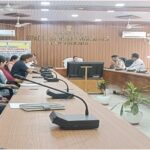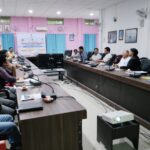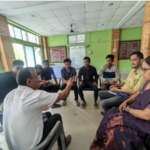Col (retd) Manoranjan Goswami
Not that I am very happy or enthusiastic to compare the Guwahati of past with the ‘developed’ Guwahati now to say that all is not well and my old love Gauhati is only getting extinct and destroyed in the guise of development and modernity. I won’t say so, because none can say, a town can stay forever in an enclosed envelope of ‘fixed time’ not being touched with the environ of ‘change’. Change is a part of life—part of life of a town or city too.
Guwahati has marched ahead with time, but were we prepared for the ‘onslaught of development’ and ‘social modernity’ as achieved or imposed on this historic city in such a short time. Probably the answer is just ‘NO’. Guwahati is growing and at the same time dying too.
A time has come when this beautiful city of the country is getting choked and breathless to the extent that the inhabitants now, particularly the younger generation is asking how to rebuild the city at least to make it livable. The narrow roads with growing traffics, the choked drains, the artificial floods, the stinking environment, the aggressive market demands—all makes Guwahati a city of challenge to peaceful stay of its citizens.
I have seen this city from 1950 onwards—a long sixty years. I have grown in this city from childhood to this advanced age. In between, I have worked and stayed for long period in big cities like Delhi, Mumbai, Chennai and Kolkata, not to speak of minor ones like Pune, Jodhpur or Jabalpur. Of big cities, I can say that all these cities were originally planned keeping the changes the next hundred years would bring in a large way.
How otherwise, The Esplanade at Kolkata, the Cannaught Place in Delhi or Vitoria terminus in Mumbai were planned and built? These large cities have grown much bigger both in population or traffic load over the years, but still, except in some areas, these large cities are not coming to a stage of ‘choke’ as Guwahati has come to be. Guwahati main roads like Mahatma Gandhi Road, AT Road, GS Road etc. all are now incapable to bear the traffic as it is today. I have grown near Bharalu river, studying in Sonaram School. I have swum in the clear water of Bharalu River joining Brahmaputra. Can anybody think today of even touching the water of Bharalu river (if there is any water at all).
I remember walking alongside the Brahmaputra from Bharalumukh to Kacharighat market for shopping, I remember cycling along the main roads through Panbazar or Paltan bazaar to District library or Cotton college, I remember going on boat to Umananda area from Bharalu for immersion of Swaraswati Devi.
I remember walking and climbing over Nilachal hill for visiting Kamakhya Temple. That was a different Guwahati— a city of pleasure, city of natural beauty and, of course, a city of inter personnel relation. It was not a city of malls and market, a city of dirt and garbage, a city of unmanageable traffic and of course, many a time, a city of artificial relation and a race for wealth. I will not come to the social aspects, what I would like is to point out few tangible and positive steps the Government ( I include GMC or GMDA) should take immediately to ameliorate the problems to some extent—both short terms and long terms. I am just giving my views in point form and not elaborating.
First, as it has happened today (27 Jun, 2014), half of Guwahati is under water. Water logging and artificial flood is taking even human lives, not to speak of inconvenience galore. One little downpour makes Guwahati unlivable. My view is only one—do not take short term measures. Go for expert opinion at national level or at international level.
As I understand, IIT Guwahati has submitted a detailed plan how to combat this problem of artificial flood in the city. I would suggest—go beyond the usual official red- tapes and take up the project which is considered viable by the experts. Politics and political agenda should be out of the way. In fact, I must say that Guwahati does not have a proper drainage plan yet.
I hope Government, both at State level and at Centre, will go for a technically viable plan for implementation with absolute transparency. So far as traffic problem is concerned, a proper transportation analysis is necessary and if necessary restricts new purchase of cars within the bound of law as far as possible. Above all, citizens must not only be only demanding, but they must co-operate. The younger generation must take lead to ensure adherence of civic sense by all.
We cannot allow Guwahati, the historic city of the nation and gateway to North east to just die. The Government, the technocrats, the citizens must work together with one aim—preserve Guwahati. I wish to see the Gauhati of my past with same pride for the future. We can together.







